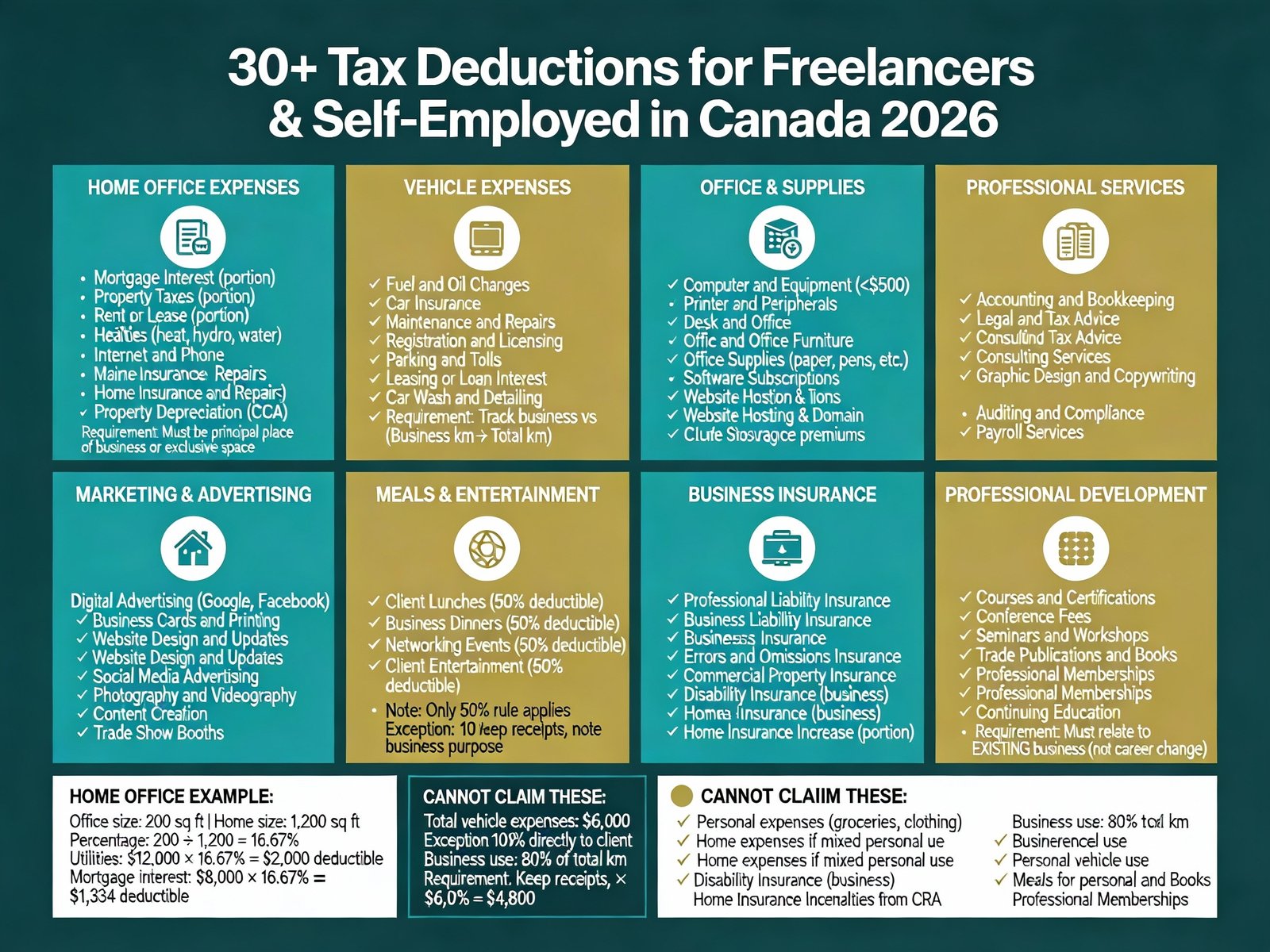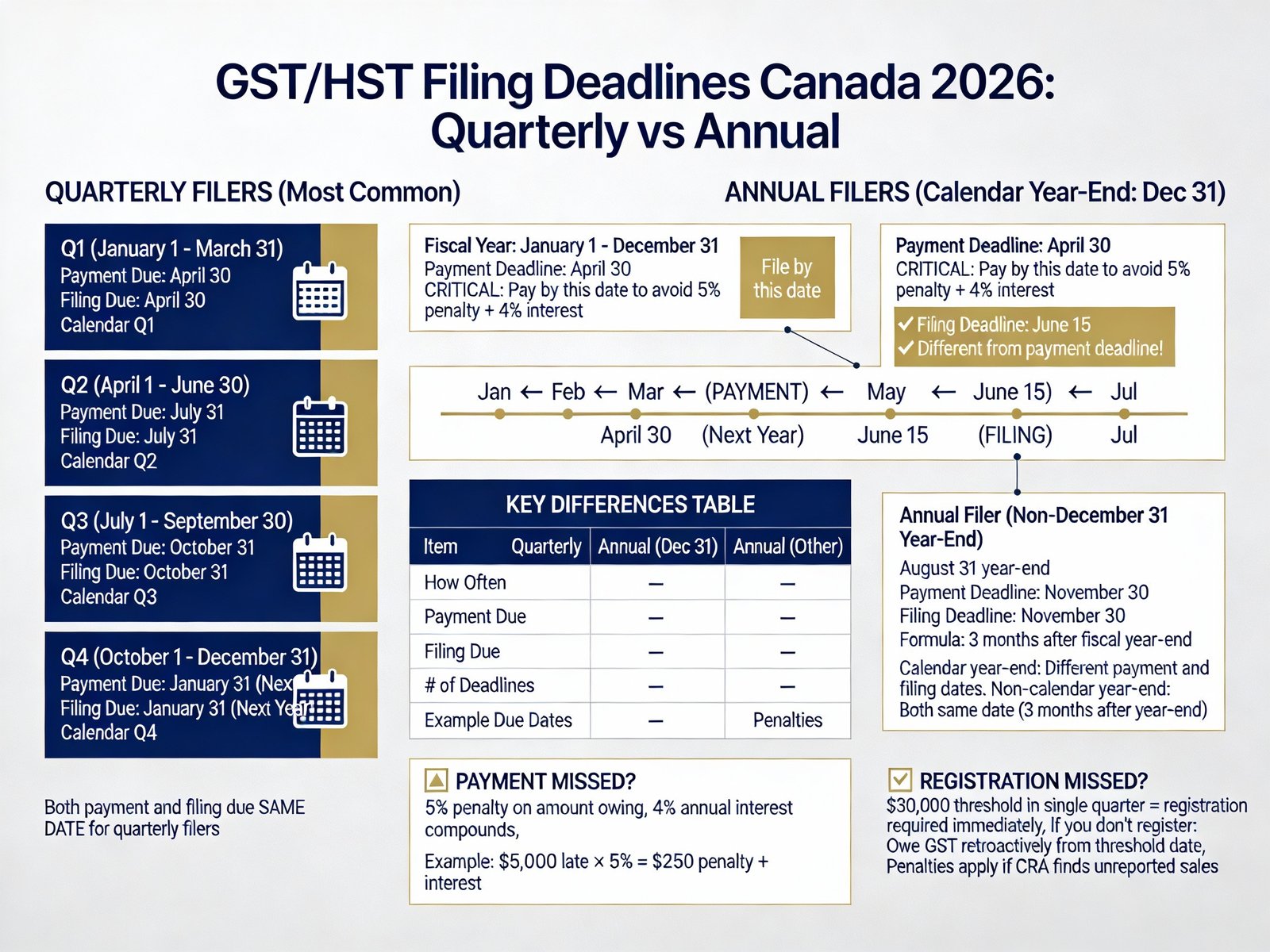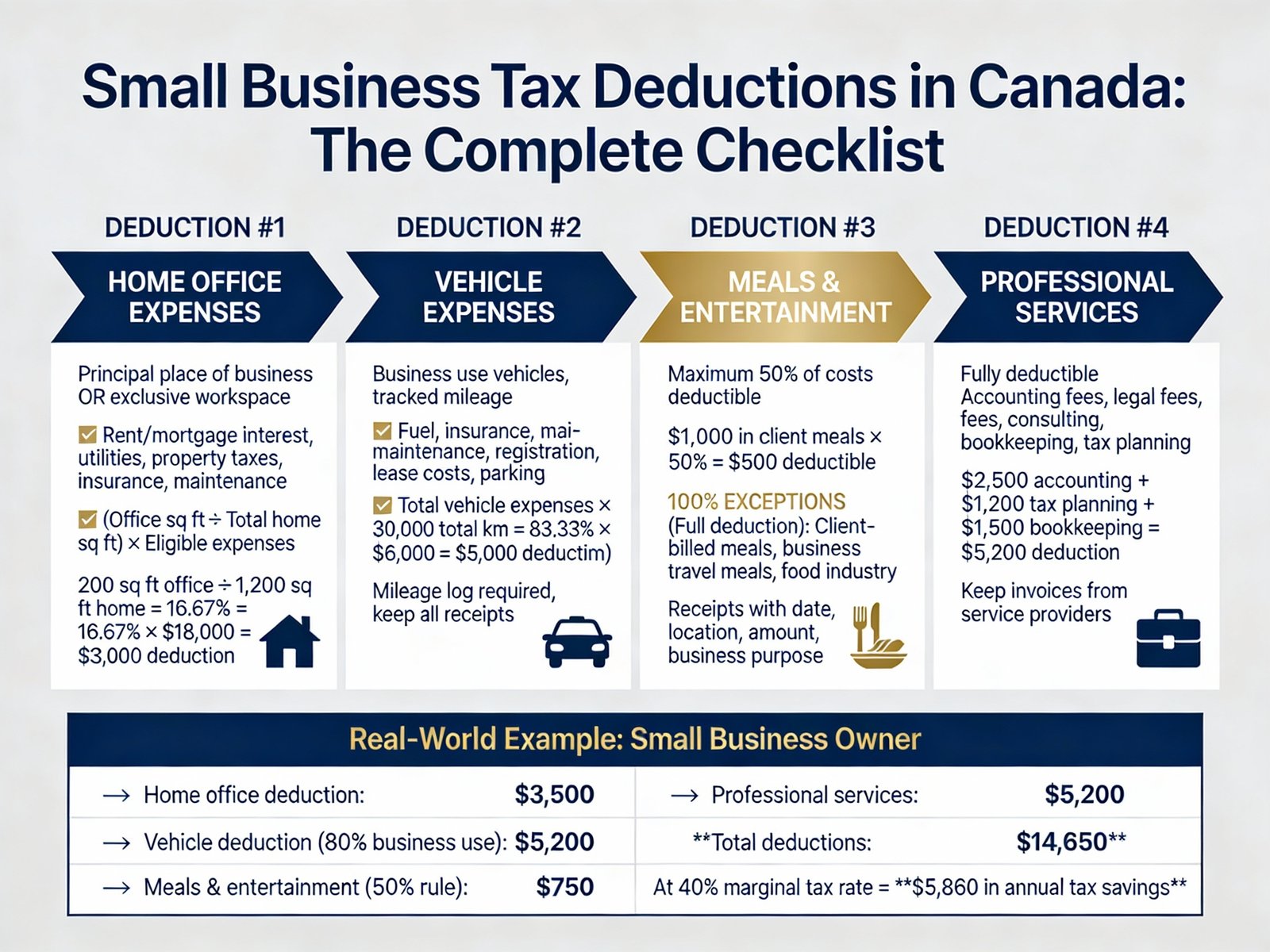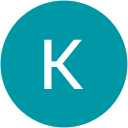Many vulnerable Canadians with lower income are missing out on valuable benefit and credit payments simply because they aren’t filing their income tax returns. Low-Income Tax Filing services in Canada can help solve this problem, ensuring you receive all the government benefits you’re entitled to.
Filing your taxes every year is important even if you have no income to report. By doing so, you gain access to various credits and benefits that could significantly improve your financial situation. Fortunately, if you have a modest income and a simple tax situation, you may be eligible for help at a free tax clinic. Furthermore, these complimentary tax filing services are specifically designed to support economically disadvantaged individuals during tax season.
In this comprehensive guide, we’ll explore everything you need to know about free tax filing options in Canada, including how to find free income tax clinics near you, what documents to prepare, and what to expect during the process. Additionally, for Low-Income Tax Filing services in Canada, you can contact BOMCAS Canada for all your tax needs.
The Importance of Tax Filing for Low-Income Canadians
Research shows that approximately 10-12% of Canadians don’t file their tax returns, consequently missing out on an estimated CAD 2.37 billion in tax benefits in a single year. This substantial gap represents money that could be helping families make ends meet and improve their financial stability.
Why filing matters even with no income
Filing your taxes isn’t just about paying the government—it’s often about the government paying you. Indeed, for Canadians with low incomes, tax time presents a crucial opportunity to boost household finances, regardless of whether you earned any income at all.
Many people mistakenly believe that if they didn’t earn income or owe taxes, there’s no need to file. Nevertheless, this misconception can be costly. Even with zero income to report, filing your tax return opens the door to various benefits and credits that can substantially increase your financial resources.
Consider this: parents might qualify for the Canada Child Benefit, students can carry forward tuition credits to reduce future taxes, adults over 19 may receive the GST/HST credit, and seniors could qualify for benefits like the Guaranteed Income Supplement. In essence, tax filing creates a financial lifeline that connects you to support programs you’ve already paid for through the tax system.
For Low-Income Tax Filing services in Canada, BOMCAS Canada offers comprehensive assistance tailored to your specific needs.
How it affects benefits and credits
The impact of tax filing on benefit access is remarkably substantial. In Ontario alone, there are 41 potential federal and provincial income benefit programs accessible directly or indirectly through tax filing. These programs serve as vital financial pillars for many Canadian households.
For families with children living on social assistance, tax benefits can represent up to 40% of their total income. Moreover, eligible seniors with low incomes can receive up to CAD 975.35 additional monthly income through the Guaranteed Income Supplement.
Other notable benefits include:
- The Canada Child Benefit – a tax-free monthly payment for families with children under 18
- GST/HST credit – a tax-free quarterly payment helping offset sales taxes
- Canada Workers Benefit – a refundable tax credit for low-income working individuals and families
- Disability-related benefits – including the Child Disability Benefit and Disability Tax Credit
- Provincial credits – helping offset costs for medicine, home heating, and other essentials
Primarily, to access these benefits, you must file your tax return annually. As the Canada Revenue Agency (CRA) emphasizes, “To get the benefits and credits you may be eligible for, you need to do your taxes each year”.
Long-term financial impact
The financial impact of consistent tax filing extends well beyond immediate benefits. Tax refunds often represent the single largest cash infusion low-income households receive annually. This financial boost creates opportunities for:
- Making essential large purchases
- Establishing emergency savings
- Smoothing out income volatility from precarious employment
- Creating financial stability during unexpected expenses
Furthermore, studies demonstrate that benefits like the Canadian Child Tax Benefit improve children’s educational outcomes along with physical and mental health. This showcases how proper tax filing creates generational advantages that extend far beyond immediate financial relief.
For the economy as a whole, tax filing and benefit take-up help stabilize economic conditions during crises by protecting household incomes from severe shocks. This ripple effect makes tax filing not just personally beneficial but also socially valuable.
Unfortunately, many eligible Canadians miss out on crucial benefits. For instance, about 200,000 potentially eligible seniors don’t receive the Guaranteed Income Supplement, with approximately one-quarter of these cases stemming from failure to file taxes. These missed opportunities represent genuine financial hardship for vulnerable populations.
Remember that filing your taxes is not merely an obligation—it’s a proven strategy to improve your financial situation. Through programs like SimpleFile and community tax clinics, filing is becoming increasingly accessible, helping more Canadians secure the benefits they rightfully deserve.
Who Can Use Free Tax Filing Services in Canada
Free tax filing services in Canada aim to remove barriers for those who might otherwise struggle to complete their returns. Understanding if you qualify is the first step toward accessing these valuable services.
Income and tax complexity criteria
The Community Volunteer Income Tax Program (CVITP) offers free tax clinics primarily for individuals with modest incomes and simple tax situations. Although individual organizations may adjust these thresholds based on local economic conditions, the general income limits are:
- Single person: CAD 48,767.61 or less
- Two people: CAD 62,701.21 combined
- Larger families: Add CAD 3,483.40 for each additional family member
Yet income isn’t the only consideration—your tax situation must also qualify as “simple.” According to CRA guidelines, a simple tax situation generally means you either have no income or your income comes from:
- Employment earnings
- Pension payments
- Government benefits (CPP, Disability, Canada Child Benefit, EI, Ontario Works)
- RRSP contributions
- Support payments
- Scholarships, fellowships, bursaries or grants
- Interest income under CAD 1,393.36
Conversely, your situation is not considered simple when you:
- Are self-employed or have employment expenses
- Report business or rental income and expenses
- Have capital gains or losses
- Filed for bankruptcy
- Need to complete a tax return for a deceased person
For Low-Income Tax Filing services in Canada, contact BOMCAS Canada for all your tax needs, especially if your situation falls outside the “simple” classification.
Newcomers, seniors, and students
Each demographic has specific considerations when accessing free tax filing:
Students: Many tax software providers offer completely free services to students regardless of income level. The Canadian Federation of Students partners with some providers to ensure students can file at no cost. To qualify under these programs, you typically must be a resident of Canada, have paid tuition fees, and have attended school for at least one month during the tax year.
Newcomers to Canada: The Canadian tax system bases obligations on residency status rather than citizenship. If you’ve recently moved to Canada, you should update your address with the CRA promptly, as this may affect your eligibility for provincial benefits. Many free tax clinics offer specialized services for newcomers who may be unfamiliar with Canadian tax requirements.
Seniors: Nearly all provinces and territories prioritize seniors for free tax preparation services. Given that many seniors live on fixed incomes, these services help ensure they receive crucial benefits like the Guaranteed Income Supplement.
Young adults: Some tax software providers offer discounted services specifically for younger Canadians. For instance, if you’re 25 or younger, certain providers offer expert-assisted filing for only CAD 27.87.
Geographic and residency requirements
Eligibility criteria for free tax filing services vary somewhat by province and territory. Below are general guidelines across Canada:
British Columbia, Alberta, and Saskatchewan all offer free services to low-income individuals (under CAD 48,767.61), seniors, and students.
Ontario and Quebec follow similar income thresholds (under CAD 48,767.61 for individuals, CAD 62,701.21 for families) while also offering specialized support for seniors and students.
The Atlantic provinces (New Brunswick, Nova Scotia, Prince Edward Island, and Newfoundland and Labrador) maintain similar eligibility criteria, focusing on low-income individuals, seniors, and students with straightforward returns.
Northern territories (Yukon, Northwest Territories, and Nunavut) provide free filing assistance to low-income individuals, seniors, and students, often with adjusted thresholds reflecting higher costs of living.
Throughout the entire process, safeguarding your personal information remains paramount. When seeking free tax filing assistance, always verify you’re working with legitimate CVITP volunteers or authorized service providers.
Exploring CRA’s Free Filing Tools and Services
The Canada Revenue Agency offers several digital tools that make filing taxes simpler for low-income Canadians. These services eliminate the need for expensive software or professional help, ensuring everyone can access the benefits they deserve.
SimpleFile options explained
SimpleFile refers to CRA’s group of free digital filing options designed for straightforward tax situations. These user-friendly solutions effectively reduce barriers to tax filing by providing completely free alternatives to paid services.
The CRA currently offers these SimpleFile options:
- NETFILE – This online service lets you file your return directly to the CRA using certified commercial tax software. Many providers offer completely free versions for simple tax situations and lower incomes.
- File my Return – An automated phone service that allows eligible individuals to file returns by answering simple questions and using information the CRA already has on file. This service is invitation-only, primarily targeting seniors and low-income Canadians with unchanged or simple situations.
- Tax Filing Assistance – A web-based service similar to File my Return but accessible online through CRA My Account.
Naturally, to use these services, you’ll need either a reliable internet connection or phone access. The eligibility criteria typically include having a simple tax situation as defined in previous sections.
For Low-Income Tax Filing services in Canada, BOMCAS Canada provides personalized assistance if you find the SimpleFile options challenging to navigate on your own.
Auto-fill My Return (AFR)
Auto-fill My Return fundamentally changes how Canadians prepare their taxes by automatically populating tax forms with information the CRA already has. This service pulls data from T-slips, previous returns, RRSP contributions, and other information stored in CRA’s database.
Using AFR offers several key advantages:
- Reduces errors – By pre-filling forms with accurate information directly from source documents
- Saves time – Eliminates manual entry of numerous fields
- Ensures completeness – Helps capture all reported income
- Simplifies the process – Makes tax filing less intimidating for first-time filers
To access this feature, you must have a CRA My Account and use NETFILE-certified tax software that offers AFR integration. Currently, most major tax software providers support this functionality, including many free options.
Security remains paramount with AFR. The service uses encryption and secure authentication through CRA My Account to protect your sensitive information. Furthermore, you maintain control by reviewing all auto-filled information before submission and making corrections if needed.
CRA’s automatic tax filing pilot for 2025
Starting in 2025, the CRA is launching an automatic tax filing system aimed at helping vulnerable Canadians access benefits without having to file taxes themselves. This groundbreaking initiative primarily targets individuals who consistently miss out on benefits due to non-filing.
Under this new system, the CRA will automatically file returns for eligible Canadians using information already in their systems. Initially, the pilot will focus on:
- Low-income individuals with simple tax situations
- Seniors with fixed incomes
- Individuals receiving social assistance
- First-time filers who may find the process intimidating
The CRA estimates this initiative could help approximately 2 million additional Canadians receive benefits they’re entitled to but currently miss out on due to not filing.
Participation in the program will be voluntary, with eligible individuals receiving invitations from the CRA. Once enrolled, the process happens automatically each year unless circumstances change substantially.
Besides the automatic filing system, the CRA continues expanding its digital services, including virtual appointments with tax professionals and enhanced mobile access to services.
Undoubtedly, these tools and services represent significant steps toward making tax filing more accessible for all Canadians, particularly those with lower incomes. For personalized guidance on Low-Income Tax Filing services in Canada or assistance with accessing these tools, BOMCAS Canada provides dedicated support tailored to your specific situation.
How to Find Free Tax Clinics Near You
Accessing free tax help starts with finding the right clinic for your needs. Fortunately, several straightforward methods exist to connect you with these valuable services throughout Canada.
Using CRA’s clinic directory
The Canada Revenue Agency maintains a comprehensive online clinic directory—your first stop when searching for free tax filing assistance. This official database allows you to quickly locate services based on your specific needs and location.
To use the directory effectively:
- Visit the CRA’s Community Volunteer Income Tax Program website
- Click on “Find a tax clinic in your area” or “directory” link
- Enter your location details
- Select applicable criteria that match your situation
- Review the list of available clinics
This searchable tool shows both in-person and virtual tax clinics across Canada, making it simple to find one that suits your specific circumstances. Notably, the directory is updated regularly to ensure you have access to the most current information.
As a helpful tip, many free tax clinics operate primarily between March and April each year, coinciding with tax season. However, some clinics remain open year-round for those needing assistance outside peak filing periods.
Searching ‘free tax returns near me’
Beyond the CRA’s directory, online searches often yield additional resources. A simple search for “free tax returns near me” or “free income tax clinics near me” typically reveals:
- Local community organizations offering free filing assistance
- Financial empowerment programs with tax preparation services
- Credit counseling agencies providing seasonal tax support
- Professional accounting firms volunteering services
In Quebec specifically, residents can find tax preparation sessions by clicking “list of income tax return preparation sessions” on the Revenu Québec website. This link redirects to the Government of Canada website where these sessions are listed as “tax clinics”.
For those without internet access, calling the CRA or Revenu Québec directly can provide information about organizations offering income tax assistance in your area.
For Low-Income Tax Filing services in Canada, BOMCAS Canada provides dedicated support tailored to your specific situation.
Local libraries and community centers
Public libraries and community centers serve as excellent resources for free tax filing assistance. Primarily, they offer services in two ways:
First, many directly host free tax clinics during tax season. For example, Halifax Public Libraries begins booking appointments for their tax clinics starting March 1st each year. These appointments can typically be booked by calling your local library branch or visiting in person.
Second, these facilities often maintain information about other local tax clinics even when not hosting them directly.
In addition to libraries, check with:
- Community health centers
- Settlement agencies for newcomers
- Senior centers
- Local religious organizations
- Municipal service centers
At most locations, appointments become available starting in early March, and spots fill quickly. Subsequently, it’s advisable to check availability as soon as possible rather than waiting until the tax filing deadline approaches.
Throughout this process, remember that all free tax clinics are offered through the Community Volunteer Income Tax Program, a partnership between the CRA and community organizations. These volunteers are trained to handle straightforward tax situations for eligible individuals.
Preparing for Your Tax Appointment: What You Need
Being thoroughly prepared for your tax appointment saves time and ensures you receive all eligible benefits. Gathering the right documents beforehand helps volunteers accurately complete your return without unnecessary delays.
Essential documents checklist
To file your taxes successfully at a free clinic, you’ll need to bring several key items. First and foremost, your Social Insurance Number (SIN) is required as the primary identification for your tax account. This 9-digit number connects all your tax information within the CRA system.
Beyond identification, you should prepare:
- Income information slips – including T4 (employment), T4A (other income), T4E (employment insurance), and T5007 (social assistance)
- Receipts for deductible expenses – medical costs, charitable donations, childcare expenses
- Previous Notice of Assessment from last year (when possible)
- Identification documents to verify your identity
If you’ve misplaced any tax slips, don’t worry. Contact your employer or the slip issuer for a replacement copy, or call the CRA’s general inquiries line at 1-800-959-8281. Alternatively, some volunteers can retrieve your tax slips through the CRA’s Auto-fill my Return feature, though not all volunteers have access to this tool.
For Low-Income Tax Filing services in Canada, BOMCAS Canada can help you obtain missing documentation or navigate the preparation process.
Special considerations for newcomers
Newcomers to Canada face unique requirements when preparing for tax appointments. Primarily, you must report your exact date of entry to Canada for income tax purposes. For example, if you arrived on June 8, 2024, you would enter “0608” on your return.
Furthermore, you must report your world income (from all sources inside and outside Canada) for the part of the year you were considered a Canadian resident. This requirement applies even if some pension income from outside Canada may be exempt due to tax treaties.
Regarding property ownership, the CRA considers any property you owned when immigrating to have been sold and immediately reacquired at fair market value on your arrival date. Therefore, keep records of the fair market value of assets like shares, jewelry, or collections on your arrival date.
Tips for organizing your paperwork
Effective organization makes your tax appointment much smoother. Currently, the CRA requires you to keep tax records for six years after filing, so establishing a good system now saves future headaches.
Throughout the year, maintain a dedicated folder (physical or digital) where you store tax-related documents as you receive them. Ideally, sort receipts by category – medical, charitable, education, childcare – to streamline the filing process.
For clinic appointments, organize your documents chronologically or by category in a folder or envelope. This preparation helps volunteers quickly locate information without shuffling through disorganized papers.
Remember that different clinics operate in various formats – walk-in, drop-off, or by appointment (either in-person or virtual). Depending on the format, your paperwork needs might vary slightly. For drop-off clinics, clearly label your documents and include contact information since you’ll need to return later to collect your completed return.
Keeping digital copies of important documents offers additional security. Many banking institutions and employers provide electronic versions of tax documents that you can download and save. Otherwise, consider scanning physical documents as backup.
Thoroughly preparing your documents beforehand maximizes the efficiency of your free tax appointment and helps ensure you receive all the benefits and credits you’re entitled to.
Filing Your Taxes: What to Expect at the Clinic
Filing taxes can be intimidating, yet understanding what happens at free tax clinics removes much of the mystery. Once you’ve located a clinic and gathered your documents, knowing what to expect makes the experience much smoother.
Clinic types: walk-in, drop-off, virtual
Free tax clinics operate in several different formats, each designed to accommodate various needs and preferences. The Community Volunteer Income Tax Program (CVITP) supports these different approaches to ensure accessibility for all eligible Canadians.
Walk-in clinics operate on a first-come, first-served basis during advertised hours. No appointment is necessary at these locations, making them ideal for those with flexible schedules or unexpected tax filing needs. Upon arrival, you’ll join a queue and wait for the next available volunteer.
Drop-off clinics offer a convenient alternative where you simply leave your tax documents during advertised hours. A volunteer completes your return offline, after which you return to collect your documents and completed tax return. Importantly, you must prove your identity when picking up your materials to maintain security.
Appointment-based clinics require scheduling in advance and come in several varieties:
- In-person appointments where a volunteer completes your return at a scheduled time
- Virtual appointments via videoconference or phone with a volunteer in your province/territory
- Special virtual appointments for residents of northern communities (prescribed zones)
Many organizations have shifted toward appointment-only services in recent years, predominantly operating virtually through mutually-agreed methods between volunteers and clients.
How volunteers assist you
Behind every free tax clinic stands a team of dedicated volunteers trained through the Community Volunteer Income Tax Program. These individuals receive specific training to handle straightforward tax situations efficiently.
Primarily, volunteers will:
- Help you submit tax returns using specialized software like UFile
- Access the CRA’s Auto-fill my Return feature when available to retrieve your tax slips electronically
- Ensure all tax concepts and procedures are fully explained
- Follow strict protocols to maintain security and confidentiality of your information
Essentially, these volunteers serve as guides through the tax filing process, handling the technical aspects while ensuring you understand what’s happening. They cannot, nonetheless, provide tax planning advice or handle complex situations involving self-employment, rental properties, or investments.
For Low-Income Tax Filing services in Canada requiring more specialized assistance, BOMCAS Canada offers additional support beyond what volunteer clinics typically provide.
Timeline for return completion
The timeframe for completing your tax return varies depending on the clinic type and current demand. In general, walk-in clinics complete returns on the spot, whereas drop-off services typically require several days for processing.
For virtual appointments, many organizations contact applicants within seven business days to schedule a mutually convenient time. Once connected, the actual tax filing session usually takes between 30-60 minutes, depending on the complexity of your situation.
Most free tax clinics operate between March and April annually, coinciding with tax season. Occasionally, some clinics remain open year-round for those needing assistance outside peak filing periods. As a practical matter, appointments fill quickly during peak season, thus early registration is advisable.
Many clinics stop accepting applications by late March or early April. For instance, some programs accept applications on a first-come, first-served basis until March 31, or until all available slots have been filled.
Once your return is filed, processing times follow standard CRA timelines—approximately two weeks for electronic returns and eight weeks for paper returns. Direct deposit significantly accelerates receipt of any refunds compared to waiting for a check by mail.
Avoiding Pitfalls During Free Tax Filing
Navigating free tax filing successfully requires attention to detail and awareness of potential issues. Even small mistakes can delay processing or affect the benefits you receive.
Common errors and how to prevent them
Tax returns frequently contain avoidable errors that can trigger problems with the CRA. Primarily, these include providing incorrect personal information, missing income sources, or making calculation mistakes. When filing electronically, errors like invalid SIN numbers or missing mandatory fields can cause your entire submission to be rejected.
To file successfully:
- Double-check all personal details (name, address, SIN)
- Gather all income slips before starting
- Use tax software that automatically performs calculations
- Review your return thoroughly before submitting
Many Canadians also mistakenly assume they don’t need to file taxes because they have low or no income, potentially missing out on valuable benefits.
Understanding service limitations
Free tax filing options typically handle only straightforward situations. In fact, SimpleFile is designed exclusively for basic income types like T4 employment income, potentially causing eligible individuals to miss thousands in benefits.
Similarly, most free software doesn’t cover employment expenses, investment income, rental properties, or self-employment. Complex situations involving multiple income sources or specific deductions might require professional assistance instead of free services.
For Low-Income Tax Filing services in Canada requiring more specialized help, BOMCAS Canada offers support beyond what volunteer clinics typically provide.
Protecting your personal information
Identity theft involves unauthorized use of your personal information for criminal purposes, including fraudulently obtaining tax refunds or benefits. The CRA takes protection of taxpayer information seriously, maintaining physical and digital security measures.
Effectively protect yourself by:
- Never providing personal information via email (the CRA doesn’t request information this way)
- Being suspicious of requests to pay taxes on lottery winnings
- Keeping your passwords, PINs and access codes secret
- Choosing your tax preparer carefully from trusted sources
When filing online, avoid using public Wi-Fi networks and create strong, unique passwords for your tax accounts. Additionally, enable CRA email notifications to receive alerts about account changes, which can help identify potential fraud.
Additional Support and Resources Available
Beyond free tax clinics, several valuable tools exist to help low-income Canadians maximize their benefits and navigate the tax system effectively.
Benefits Wayfinder and CRA tools
The Benefits Wayfinder developed by Prosper Canada serves as an essential online guide to government benefits. This user-friendly tool helps Canadians with low-to-modest incomes identify and track benefits they might qualify for. Statistics show 93% of community users found it easy to navigate, while 86% of users successfully applied for at least one recommended benefit within a year of using the tool. Remarkably, 43% wouldn’t have applied without the Wayfinder’s recommendation.
Additionally, the CRA’s Benefits Calculator helps estimate payment amounts based on your personal circumstances, providing clarity about potential entitlements before filing.
BOMCAS Canada for low-income tax filing
For Low-Income Tax Filing services in Canada, BOMCAS Canada offers comprehensive support tailored to complex situations that might not qualify for volunteer clinics. Their specialized assistance ensures you receive maximum benefits while navigating challenging tax scenarios like self-employment or multiple income sources.
Volunteering or hosting a clinic
Interested in giving back? Tax clinic volunteers help thousands access entitled benefits annually. As a volunteer, you’ll receive comprehensive training, guidance, access to a dedicated helpline, plus free tax software. Organizations can apply to host clinics with grants available to offset costs.
Supporting these initiatives creates a stronger community where everyone can access the benefits they deserve, ultimately helping vulnerable Canadians improve their financial well-being through proper tax filing.
Conclusion
Filing your taxes may seem daunting, especially when living on a limited income. However, we’ve seen throughout this guide that completing your annual tax return stands as one of the most effective financial steps you can take. Indeed, the potential CAD 2.37 billion in unclaimed benefits represents real money that could be helping Canadian families improve their financial stability.
Above all, remember that filing taxes matters even with zero income to report. The Canada Child Benefit, GST/HST credit, and Guaranteed Income Supplement represent just a few of the programs designed to support Canadians with modest incomes. These benefits often constitute a significant portion of household finances, sometimes up to 40% for families receiving social assistance.
Finding free tax filing assistance has become increasingly accessible through CRA’s clinic directory, local libraries, and community centers. Additionally, digital tools like SimpleFile, Auto-fill My Return, and the upcoming automatic filing system for 2025 continue to remove barriers for vulnerable populations. For Low-Income Tax Filing services in Canada contact BOMCAS Canada for all your tax needs, especially if your situation involves complexities beyond what volunteer clinics typically handle.
The financial impact of consistent tax filing extends far beyond immediate benefits. Tax refunds and credits create opportunities for essential purchases, emergency savings, and long-term financial stability. Therefore, we encourage you to take advantage of these free resources each year.
Gathering the right documents, understanding clinic options, and protecting your personal information all contribute to a smooth filing experience. Though the process might initially feel overwhelming, the potential financial benefits make it well worth the effort. Your tax return serves as the gateway to numerous programs designed to support Canadians through various life stages and circumstances.
The simple act of filing your taxes each year might be the most important financial decision you make—connecting you to the benefits and credits you rightfully deserve.
Key Takeaways
Low-income Canadians are missing out on billions in benefits simply by not filing taxes, but free services make it accessible for everyone.
• File taxes annually even with zero income to access up to CAD 2.37 billion in unclaimed benefits like Canada Child Benefit and GST/HST credits.
• Free tax clinics serve individuals earning under CAD 48,767 (single) or CAD 62,701 (couples) with simple tax situations through walk-in, drop-off, or virtual appointments.
• Use CRA’s clinic directory, search “free tax returns near me,” or visit local libraries to find Community Volunteer Income Tax Program services in your area.
• Prepare essential documents including SIN, T4 slips, receipts, and previous Notice of Assessment to ensure smooth processing at your appointment.
• CRA’s new 2025 automatic filing pilot will help vulnerable Canadians receive benefits without filing themselves, targeting 2 million additional recipients.
For many low-income families, tax benefits represent up to 40% of total household income, making annual filing a crucial financial strategy rather than just a legal obligation.
FAQs
Q1. Who is eligible for free tax filing services in Canada? Free tax filing services are generally available to individuals with modest incomes (under CAD 48,767.61 for singles or CAD 62,701.21 for couples) and simple tax situations. This includes seniors, students, and newcomers to Canada with straightforward returns.
Q2. What documents do I need to bring to a free tax clinic? You’ll need to bring your Social Insurance Number (SIN), income information slips (like T4s), receipts for deductible expenses, previous year’s Notice of Assessment if available, and valid identification. For newcomers, the exact date of entry to Canada is also required.
Q3. How can I find a free tax clinic near me? You can use the CRA’s online clinic directory, search for “free tax returns near me,” or check with local libraries and community centers. Many organizations offer walk-in, drop-off, or virtual appointment options during tax season.
Q4. What if I have no income – do I still need to file taxes? Yes, filing taxes is important even if you have no income to report. It allows you to access various credits and benefits that could significantly improve your financial situation, such as the GST/HST credit or Canada Child Benefit.
Q5. Are there any new tax filing services coming for low-income Canadians? Yes, starting in 2025, the CRA is launching an automatic tax filing system aimed at helping vulnerable Canadians access benefits without having to file taxes themselves. This pilot program will initially focus on low-income individuals with simple tax situations, seniors with fixed incomes, and first-time filers.










 View Our Location
View Our Location





 181 Meadowview Bay, Sherwood Park, AB T8H 1P7, Canada (Online Clients Only)
181 Meadowview Bay, Sherwood Park, AB T8H 1P7, Canada (Online Clients Only)